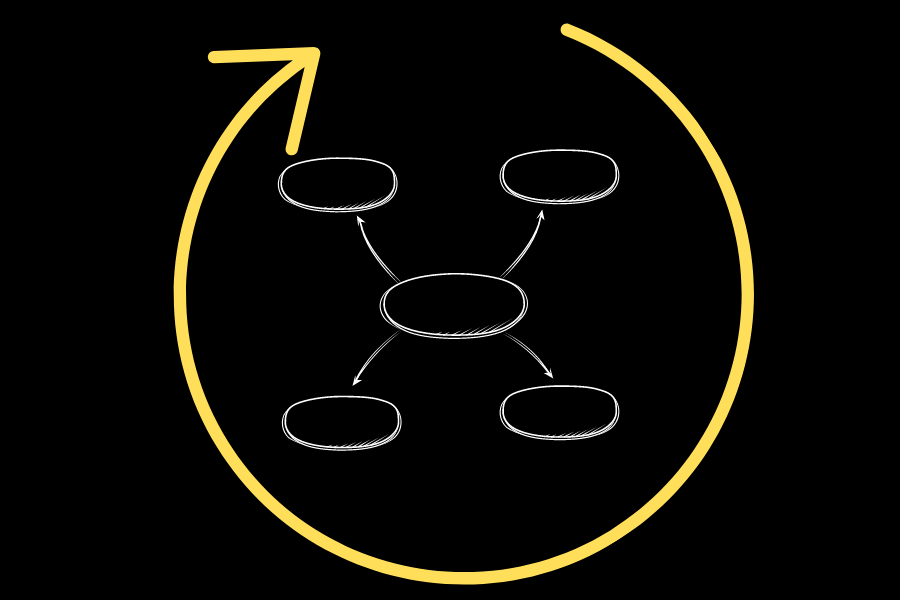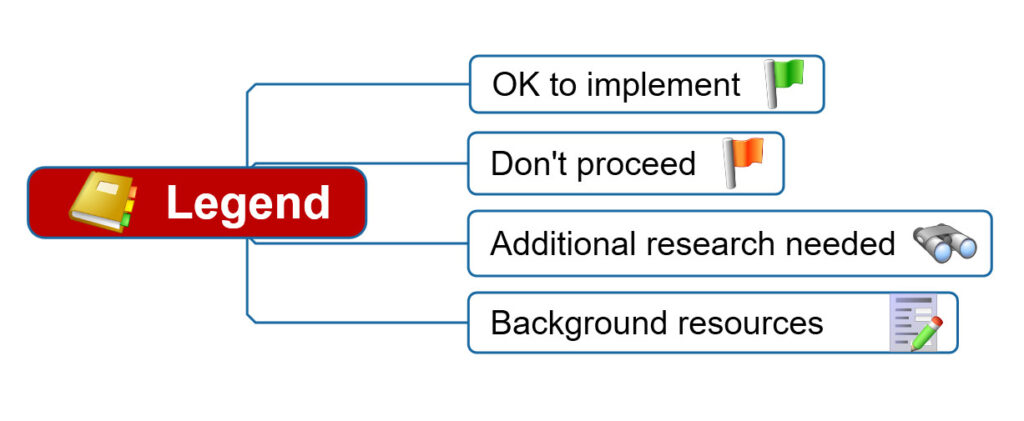
Sharing a mind map with others presents a special set of challenges. If it’s confusing, they may dismiss it, and all of your hard work will be for nothing. Worse yet, they may mentally reject any future mind maps you share with them, convinced that they don’t have the time or patience to decipher them.
Why does this happen? Because when you create a mind map, you have the advantage of knowing the context for every bit of content it contains. The people you’re sharing it with don’t. They must rely on the visible parts of your diagram – not the mysterious thinking behind it.
How can you ensure that your mind maps are not only understandable, but also informative and even compelling? Here are 5 critical things you must do before you share your mind maps with others:
1. Choose topic text and organize your topics and subtopics with great care. The burden is on YOU to communicate clearly. That’s always important in any kind of communication, but even more so with mind maps! Before you share your map, imagine you’re looking at it as the people with whom you’ll be distributing it will view it. Ask yourself questions like these:
- How much can I assume my audience knows about the subject or my mind map?
- What beliefs or attitudes do they have that may influence how they interpret it?
- What wouldn’t be obvious to them?
- What would need to be clarified for them?
- What additional context would they need to understand it?
This is one of those occasions where walking a mile (or a kilometer) in someone else’s shoes can make a big difference!
If possible, share your mind map with one or two people close to you whom your trust. Ask them for their feedback. Ask them specifically what seems unclear, disorganized or needs more explanation? Their feedback can help you refine your map before you share it with the people who matter most to you.
2. Make sure the map is structured with a logical flow. Start at the 1 o’clock position and view the first level topics in clockwise order. At this high level, do they make sense? Is there a natural flow from one main topic to the next? If not, you may need to clarify that for your target audience.

3. Provide instructions if necessary. One way to provide the additional context that your colleagues need is to provide instructions, either as a separate email or document or as a floating topic within your mind map. Under some circumstances, a simple “start here” topic callout maybe all that’s needed to orient them. In other cases, your instructions may need to be more detailed.

4. If your mind map includes icons or symbols, include a legend that explains what they mean. Icons and symbols are a perfect example of mind map elements that others may find hard to understand. Once again, you may be absolutely clear in the meaning you intended when you added them to your map. But others may find them confusing. The best way to remedy that is to add a legend as a floating topic below your mind map. It should contain one of each icon used in your map, along with a brief explanation of what it means. Like this:

5. Make sure your mind map doesn’t contain any proprietary info. This may sound obvious, but if you have created a large, complex mind map, it may contain all of your thinking, notes to yourself and proprietary bits of information that you may not want to share with others. Before you share your mind map, inspect it at both a macro and micro level to make sure that it only contains the information your target audience needs to know. Eliminate proprietary or unnecessary information.
In closing, taking 10 to 15 minutes to review your mind map before sharing it with others is a wise investment of time.
Keep in mind that not everyone you’re sharing your map with is comfortable with this visual format. Think about their needs and tweak your mind map to make things easier for them. You – and they – will be glad you did!

Leave a Reply